


Prairie / Masker
Air bubbles can be employed to mask potential targets or to provide alternate targets. The large difference in characteristic impedance (c) between the air bubbles and the surrounding water make them very efficient as reflectors of acoustic energy. Very little sound will penetrate a curtain of air bubbles, making them very efficient as masking for noise sources. Prairie-Masker is used during both active and passive undersea warfare operations. Gas turbine ships routinely operate systems inport and at sea, to avoid marine growth from plugging holes in blade tips and masker belts. During ASW operations, there is no instantaneous way of determining if the airflow rates are accurate at any given time. Improper Prairie/Masker airflow rates are an ASW mission degrade. MACHALT Proposals Under Development will replace Prairie/Masker air system portable flow meters with an electronic airflow monitoring system.
Masker air forms an air bubble screen around the hull of the ship, reducing transmission of machinery noise to the surrounding waters. Masker creates acoustic impedance mismatch between hull and water, by way of the masker belts located around the hull, putting a blanket of air bubbles between the hull's machinery noise and
the water. Masker air disguises low frequency machinery noise that radiates through the hull and cools bleed air for use in engine starting and motoring. The Masker Air System uses air from the ship's bleed air system via the bleed air cooler for discharge through emitter belts located around the underwater girth of the ship. The masker regulator valve reduces masker air pressure from 75 to 28 psig. After leaving the reducing valve, the air supply divides into two branches supplying air to the forward and aft emitter belts. On the FFG-7 the Emitter Belts are located at frames 177 and 253. Each belt is divided into port and starboard halves. Each belt has a separate air connection. Each emitter belt uses a solenoid operated valve to control air flow. The ACC controls these solenoid valves. Masker air discharges through each connection at a rate of 425 squared cubic feet per minute (SCFM) at approximately 12 psig. Perforations in the emitters allow discharge of Masker air from the keel to the water line. An orifice plate in the port side emitter belt balances air flow.
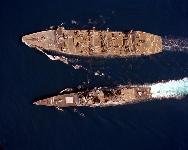
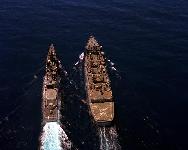
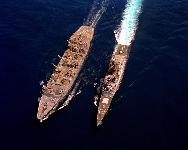
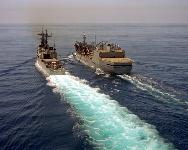
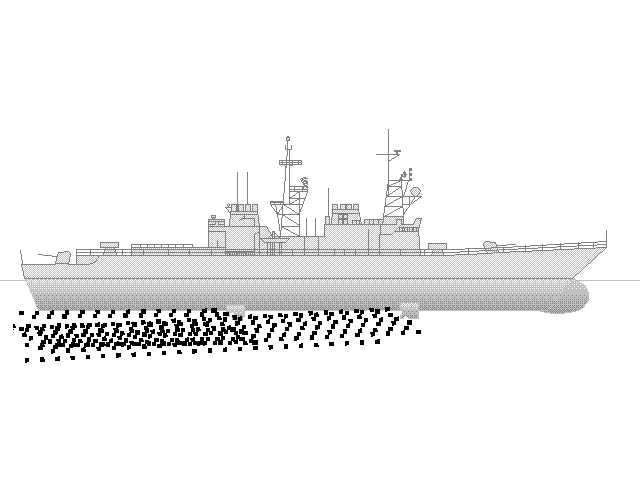
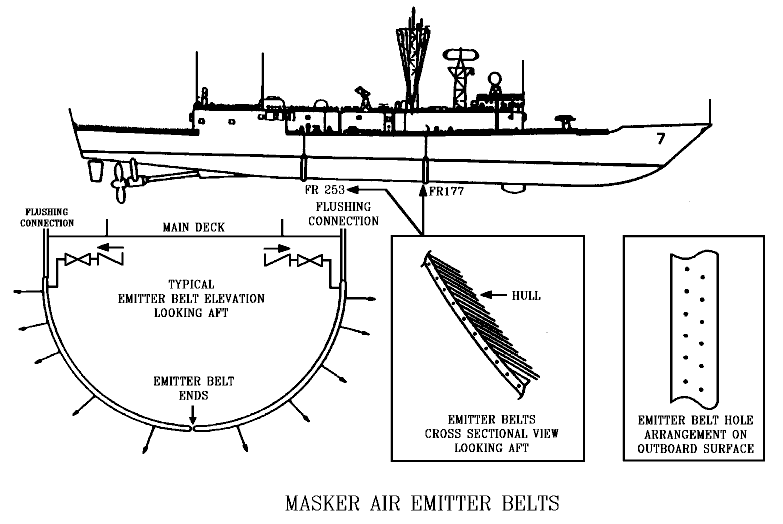
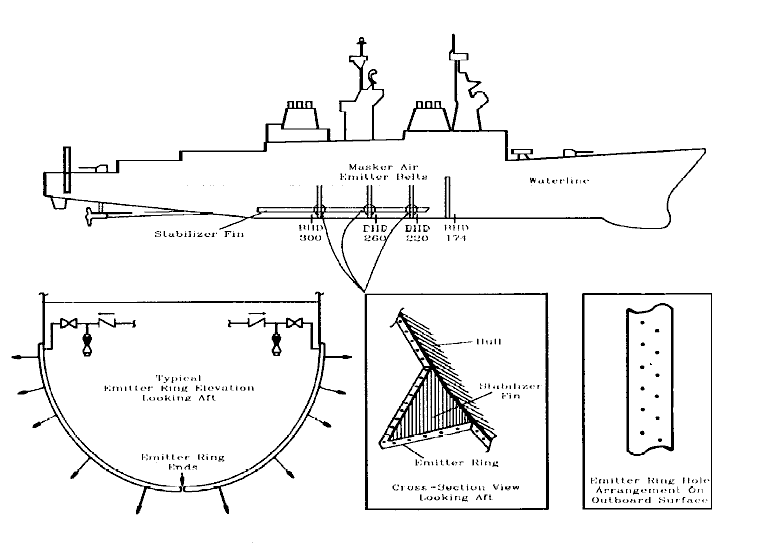 The Prairie Air System supplies air along the propeller blade leading edge to reduce the hydrodynamic noise originating at the propeller. This fills the vacuum left by the rotating blades as the water "boils," allowing cavitation bubbles to contract more slowly as area of underpressure is minimized. Prairie Air is drawn from the bleed air header, sent through a cooler then through the propulsion shafting to the propeller hubs where it is emitted from small holes on the propeller blades. Each engine room has its own prairie air system to supply air to its associated propeller. The air passes through a network of apertures along each stabilizer's leading edge, suppressing flow noise and cavitation. For instance, on the FFG-7 Prairie air flows at 400 SCFM from a branch of the bleed air system through the prairie air cooler. The cooler uses seawater from the Firemain system as a cooling medium. From the cooler, prairie air flows through a flow meter into the roto-seal at the Oil Distribution Box (OD Box) and into the prairie air tubing to the propeller. At the propeller hub after end, the air enters drilled passages in the hub body. The passages direct the air to the base of each propeller blade. Air reaches each blade through a bushing connection between the blade base and the hub body. Air then flows through an air channel in the blade leading edge and discharges through 302 orifices. Two check valves prevent entry of water when the air supply is secured. The Fin Stabilizers use prairie air supplied directly from the discharge side of the prairie air cooler.
The Prairie Air System supplies air along the propeller blade leading edge to reduce the hydrodynamic noise originating at the propeller. This fills the vacuum left by the rotating blades as the water "boils," allowing cavitation bubbles to contract more slowly as area of underpressure is minimized. Prairie Air is drawn from the bleed air header, sent through a cooler then through the propulsion shafting to the propeller hubs where it is emitted from small holes on the propeller blades. Each engine room has its own prairie air system to supply air to its associated propeller. The air passes through a network of apertures along each stabilizer's leading edge, suppressing flow noise and cavitation. For instance, on the FFG-7 Prairie air flows at 400 SCFM from a branch of the bleed air system through the prairie air cooler. The cooler uses seawater from the Firemain system as a cooling medium. From the cooler, prairie air flows through a flow meter into the roto-seal at the Oil Distribution Box (OD Box) and into the prairie air tubing to the propeller. At the propeller hub after end, the air enters drilled passages in the hub body. The passages direct the air to the base of each propeller blade. Air reaches each blade through a bushing connection between the blade base and the hub body. Air then flows through an air channel in the blade leading edge and discharges through 302 orifices. Two check valves prevent entry of water when the air supply is secured. The Fin Stabilizers use prairie air supplied directly from the discharge side of the prairie air cooler.
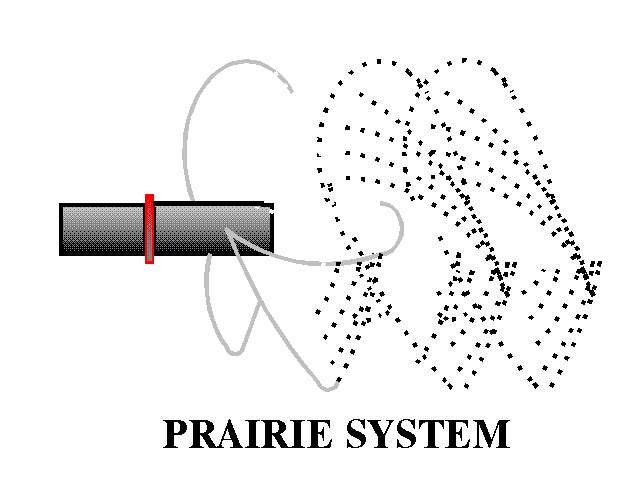
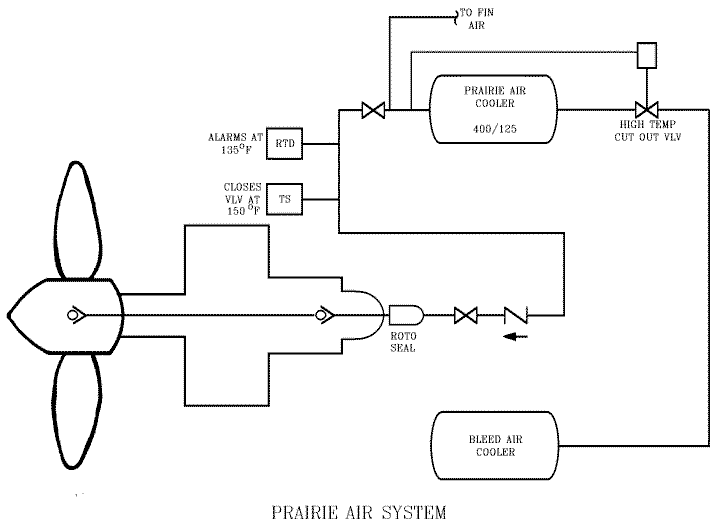
For example, on the FFG-7, customer bleed air extracted from the Gas Turbine Engine (GTE) compressor's 16th stage, provides gas turbine anti-icing, prairie and masker air, and start air for the other Gas Turbine Engine (GTE). Bleed air used for cross bleed starts, masker air, and prairie air passes through the bleed air reducing valve, reduceing bleed air pressure from 250 to 75 psig. Bleed air then passes through the bleed air cooler that uses sea water from the firemain to lower the bleed air temperature to below 400o F. After air passes through the bleed air cooler it splits off into two branches, one for starting air and the other for prairie/masker air.
Sources and Resources
http://www.fas.org/man/dod-101/sys/ship/weaps/prairie.htm
Maintained by Robert Sherman
Originally created by John Pike
Updated Monday, March 08, 1999 9:48:11 AM


















